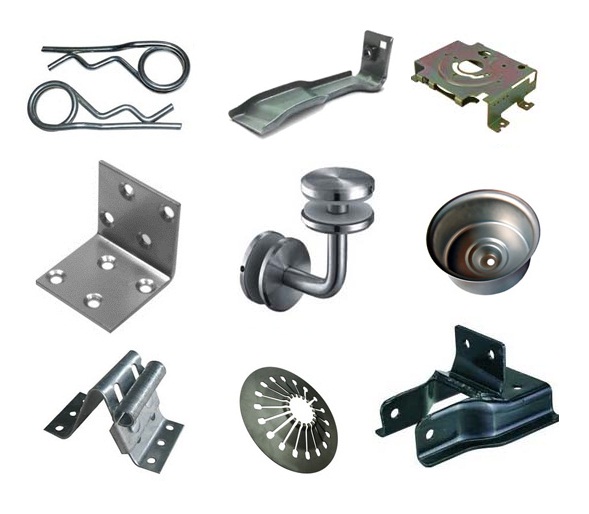Stamping parts are a forming processing method that relies on presses and molds to apply external force to plates, strips, pipes and profiles to cause plastic deformation or separation, thereby obtaining workpieces (stamping parts) of the required shape and size. Stamping and forging both belong to plastic processing (or pressure processing), and are collectively called forging.
60~70% of the world's steel products are plates, most of which are stamped into finished products. Car bodies, chassis, fuel tanks, radiator fins, boiler drums, container casings, motors, and electrical appliance core silicon steel sheets are all stamped. There are also a large number of stamped parts in products such as instruments and meters, household appliances, bicycles, office machinery, and living utensils.
Compared with castings and forgings, stamping parts are thin, uniform, light and strong. Stamping can produce workpieces with ribs, ribs, undulations or flanges that are difficult to manufacture by other methods to improve their rigidity. Due to the use of precision molds, the accuracy of the workpiece can reach micron level, with high repeatability and consistent specifications, and holes, bosses, etc. can be punched out.
Cold stamping parts generally no longer undergo cutting processing, or only require a small amount of cutting processing. The accuracy and surface condition of hot stamping parts are lower than those of cold stamping parts, but still better than castings and forgings, and the amount of cutting processing is small.
Stamping is an efficient production method. The use of composite dies, especially multi-station progressive dies, can complete multiple stamping processes on one press, realizing the entire process from strip uncoiling, leveling, punching to forming and finishing. Automatic production. The production efficiency is high, the labor conditions are good, and the production cost is low. It can generally produce hundreds of pieces per minute.
Stamping is mainly classified according to process and can be divided into two categories: separation process and forming process. The separation process is also called blanking. Its purpose is to separate the stamping parts from the sheet along a certain contour line while ensuring the quality requirements of the separated section. The surface and internal properties of stamping sheets have a great influence on the quality of stamped products. The thickness of stamping materials is required to be accurate and uniform; the surface is smooth, no spots, scars, scratches, no surface cracks, etc.; the yield strength is uniform and has no obvious Directionality; high uniform elongation; low yield-to-strength ratio; low work hardening.


Post time: Feb-29-2024





